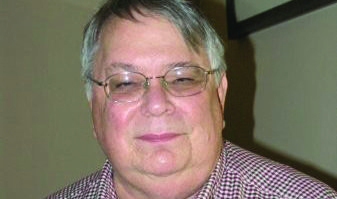Radio magazine: You revised the chapter on STL systems. What will readers learn by reading your chapter?
Doug Irwin: The chapter I worked on is 6.4, by the way. This chapter is about the use of radio systems for point to point links, often just called �STLs.� We cover some of the basic theory behind propagation at 950 MHz, for starters. If a reader has never designed a system from the ground up, this is important reading, because obviously you have to learn what to do. You need to understand how free-space loss, Fresnel zone, and the various atmospheric anomalies affect the signal as it gets from one end to the other. This part of the book all remains the same from the edition 10 years ago�clearly this information doesn�t change.
However, this chapter is not all about radio wave propagation. It also takes a deep-dive in to system configuration. This is where modern systems are brought to light. If an engineer thinks that all there is to STL systems is pointing a couple of lawn chairs at one another, he or she has a lot to learn. This chapter will benefit you.
Radio: STL systems are anaspect of broadcast technology that has changed substantially over the last 10 years. What would you say is the most important change in that time?
Irwin: The use of IP for point to point communications is not new, of course, but it has really come in to its own over the last 10 years. What was �cutting edge� ten years ago is not quite commonplace�let�s just say much more frequently used today. The chapter covers use of IP communications for STLs extensively. It also goes heavily in to the RF/IP combo�using both, one to back the other up.
Part 101 radio usage is new over the last ten years, since the rules have changed. That was an important addition to the chapter.�
RadioWhat was the most difficult aspect of your revision?
Irwin: Analog radio STLs are still in use quite a bit, but it was time to either eliminate or at least reduce the amount of space used talking about them. I still use some of these radios as well, but this chapter has to hold up over the next ten years. Looking backwards is something I didn�t want to do. When the next edition is under way, undoubtedly some of this material will be dated. I wanted to minimize that.�
RadioYou�re an everyday broadcast engineer. How often are people like yourself going to pick up this book and open your chapter?
Irwin: This is reference material. You won�t be reading it every day, of course. I would say each time someone considers an STL system, whether it�s new, or in need of updates, that they should refer to the chapter. I hope the ideas and techniques shown will be used by other engineers out there. In an ideal world, an engineer would take one of these ideas, and improve upon them. That�s how we advance the state of the art. The NAB Engineering handbook is like a snapshot of technology, in all the various aspects. In ten years it will need to be re-done and I hope some of the ideas I�ve shared will evolve in to new ones that will show up in the 12th edition.�
�









